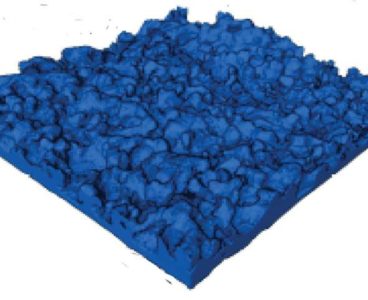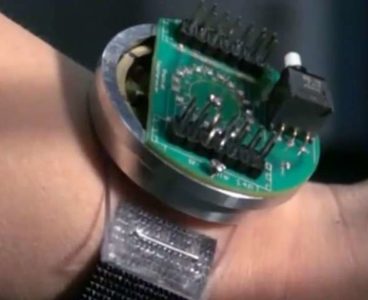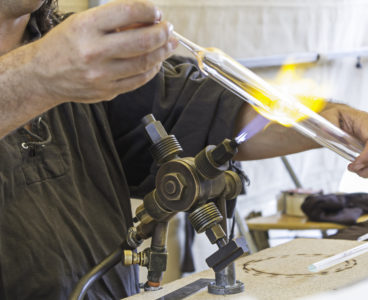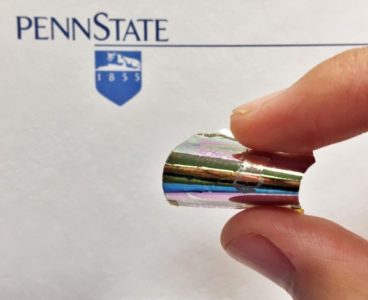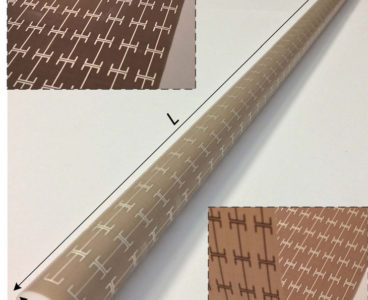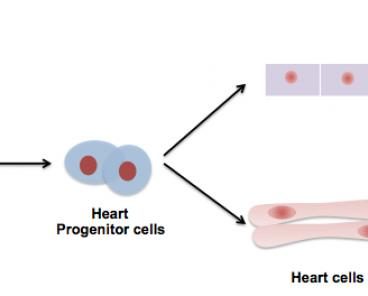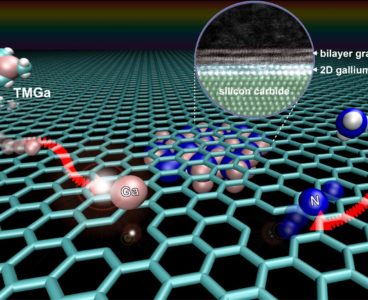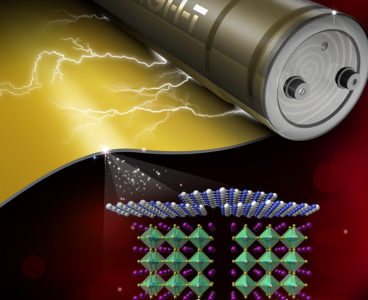Careful sample preparation, electron tomography and quantitative analysis of 3-D models provides unique insights into the inner structure of reverse osmosis membranes widely used for salt water desalination wastewater recycling and home use, according to a team of chemical engineers. These reverse osmosis membranes are layers of material with an active aromatic polyamide layer that…
Device Harvests Energy From Low-Frequency Vibrations
A wearable energy-harvesting device could generate energy from the swing of an arm while walking or jogging, according to a team of researchers from Penn State’s Materials Research Institute and the University of Utah. The device, about the size of a wristwatch, produces enough power to run a personal health monitoring system. “The devices we…
Metal-Organic Compounds Produces New Class of Glass
Piezoelectrics Stretch Their Potential with a Method for Flexible Sticking
Piezoelectric materials are used for applications ranging from the spark igniter in barbeque grills to the transducers needed by medical ultrasound imaging. Thin-film piezoelectrics, with dimensions on the scale of micrometers or smaller, offer potential for new applications where smaller dimensions or a lower voltage operation are required. Researchers at Pennsylvania State University have demonstrated…
Towards a Smart Graphene Membrane to Desalinate Water
Conformal Metasurface Coating Eliminates Crosstalk and Shrinks Waveguides
The properties of materials can behave in funny ways. Tweak one aspect to make a device smaller or less leaky, for example, and something else might change in an undesirable way, so that engineers play a game of balancing one characteristic against another. Now a team of Penn State electrical engineers have a way to…
Researchers Use Stem Cells to Regenerate the External Layer of a Human Heart
A process using human stem cells can generate the cells that cover the external surface of a human heart — epicardium cells — according to a multidisciplinary team of researchers. “In 2012, we discovered that if we treated human stem cells with chemicals that sequentially activate and inhibit Wnt signaling pathway, they become myocardium muscle…
First Accurate Simulation of a Virus Invading a Cell
Device to Control ‘Color’ of Electrons in Graphene Provides Path to Future Electronics
A device made of bilayer graphene, an atomically thin hexagonal arrangement of carbon atoms, provides experimental proof of the ability to control the momentum of electrons and offers a path to electronics that could require less energy and give off less heat than standard silicon-based transistors. It is one step forward in a new field…
Graphene Key to Growing 2D Semiconductor with Extraordinary Properties
A newly discovered method for making two-dimensional materials could lead to new and extraordinary properties, particularly in a class of materials called nitrides, say the Penn State materials scientists who discovered the process. This first-ever growth of two-dimensional gallium nitride using graphene encapsulation could lead to applications in deep ultraviolet lasers, next-generation electronics and sensors.…
‘Ideal’ Energy Storage Material for Electric Vehicles Developed
The energy-storage goal of a polymer dielectric material with high energy density, high power density and excellent charge-discharge efficiency for electric and hybrid vehicle use has been achieved by a team of Penn State materials scientists. The key is a unique three-dimensional sandwich-like structure that protects the dense electric field in the polymer/ceramic composite from…

